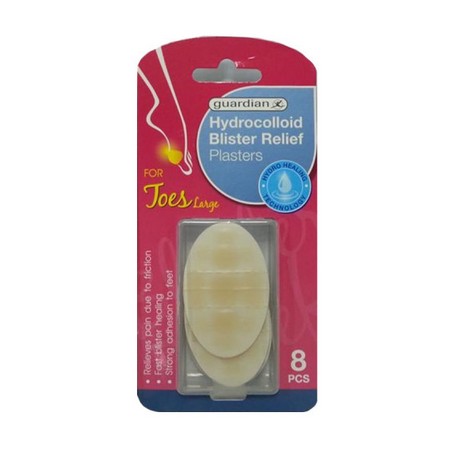Description
Take the protective layers off a hydrocolloidal blister dressing and you’ll see that it looks quite different to a normal plaster. It has a sort of rubbery texture, a bit like a chewy sweet that’s been run over by a steamroller. The material you’re looking at contains a substance called a hydrocolloid that likes to absorb moisture.
A colloid is an evenly spread-out mixture. You’ve probably heard of emulsions and aerosols, which are two common types of colloid. Milk is an emulsion (a mixture of fat particles in a watery fluid) while smoke (a mixture of soot particles in hot rising air) is an aerosol. “Colloid” is the broad, overall name for substances like aerosols and emulsions where one substance is distributed through another. A hydrocolloid is simply a type of colloid where a substance is mixed with water. Hydrocolloidal substances (such as gelatin) love to absorb water to form a gel.
In a hydrocolloidal plaster, the rubbery stuff contains a gel-forming material such as sodium carboxymethylcellulose (a water-soluble polymer made from cellulose) mixed with gelatin. There’s a top layer of elastomer (elastic material) to hold the plaster together, while your body flexes beneath it, and there’s some harmless adhesive mixed in so the whole thing sticks to your skin and stays there for at least a few days.
Direction for Use
- Apply the plaster. This is what the plaster looks like when it’s first applied. Make sure it’s centered on the wound and big enough to cover it completely without the wound being anywhere near an edge. Firm down the plaster all around the edges to make a good, clean seal all around. A compeed blister plaster on the toe of a foot. Within hours, you’ll see a little white blob forming in the middle where the plaster is removing moisture from your wound and helping it to heal.
- Be patient and wait The nicely repaired skin on a toe after a compeed blister plaster has been removed Once your plaster is in place, leave it alone for a few days. You may have to wait a week or even longer until you can safely remove it. Just watch, wait, and be patient. Take the plaster off very slowly and carefully when you think it’s ready. Eventually, your skin will be as good as new.

















We are checking your review. This could take a few seconds, please wait...